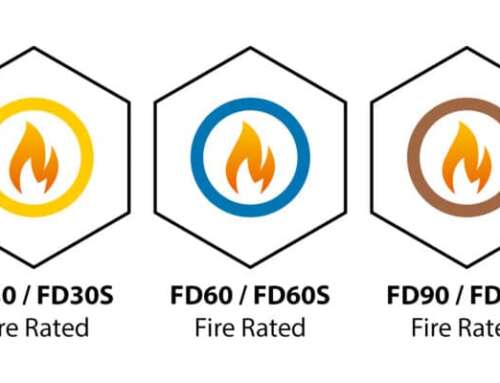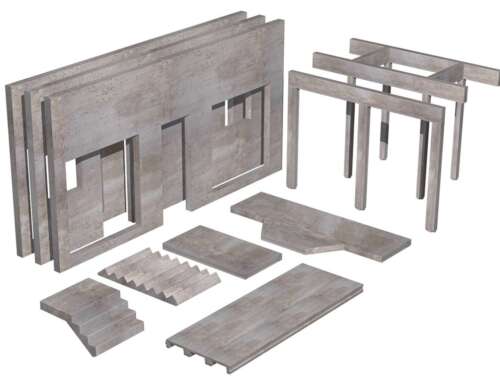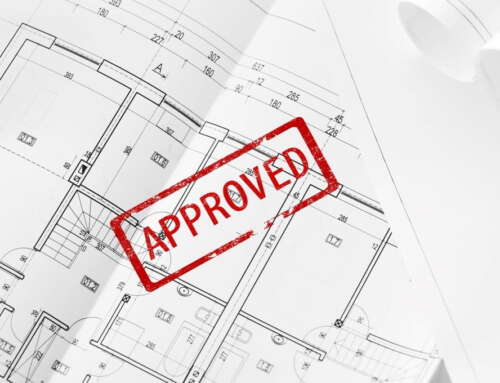A Comprehensive Guide to Window Types

1. Introduction
Definition of Windows
Windows are openings in the walls of buildings that allow natural light, ventilation, and views of the outdoors. They come in various styles, materials, and configurations to suit different architectural designs and functional needs.
Importance of Choosing the Right Window Type
Selecting the right window type is crucial because windows impact a building’s aesthetics, energy efficiency, comfort, and security. Understanding the various window styles, materials, and features will help you make informed decisions when it comes to your home or commercial property.
2. Types of Window Styles
Casement Windows
Definition: Casement windows are hinged on one side and open outward with a crank or lever. They provide excellent ventilation and unobstructed views when fully opened.
Advantages:
- Effective at capturing breezes.
- Easy to clean from inside.
- Excellent seal when closed, reducing drafts.
Considerations:
- Limited design flexibility compared to other styles.
- Crank mechanisms may require maintenance.
Double-Hung Windows
Definition: Double-hung windows have two sashes that slide vertically within the frame. They allow for both the upper and lower sashes to open, offering versatile ventilation options.
Advantages:
- Classic and versatile design.
- Easy to clean and maintain.
- Suitable for various architectural styles.
Considerations:
- Limited opening space compared to casement windows.
- Potential for drafts if not sealed properly.
Single-Hung Windows
Definition: Single-hung windows are similar to double-hung windows, but only the bottom sash is operable. The upper sash remains fixed.
Advantages:
- Affordable option.
- Low maintenance.
- Classic appearance.
Considerations:
- Limited ventilation compared to double-hung windows.
- Reduced design flexibility.
Awning Windows
Definition: Awning windows are hinged at the top and open outward from the bottom. They create an awning-like effect when open, preventing rain from entering while allowing ventilation.
Advantages:
- Excellent for rainy climates.
- Ventilation without the risk of rain entering.
- Unique design and versatility.
Considerations:
- Limited view when fully opened.
- Less common than other window styles.
Sliding Windows
Definition: Sliding windows consist of two or more horizontal sashes that slide horizontally within the frame. They are known for their ease of operation.
Advantages:
- Simple and functional design.
- Easy to operate and maintain.
- Ideal for wide window openings.
Considerations:
- Limited ventilation compared to other styles.
- May accumulate dirt or debris in the tracks.
Picture Windows
Definition: Picture windows are large, fixed windows that do not open. They are designed to provide unobstructed views and ample natural light.
Advantages:
- Excellent for showcasing scenic views.
- Maximum energy efficiency as they are sealed shut.
- Enhance the aesthetic appeal of a room.
Considerations:
- Provide no ventilation.
- Cannot be used as emergency exits.
Bay and Bow Windows
Definition: Bay windows consist of three or more windows arranged at angles, creating a projecting bay area. Bow windows are similar but have a more rounded appearance.
Advantages:
- Create additional interior space and seating.
- Enhance curb appeal.
- Allow for various window styles within the assembly.
Considerations:
- May be expensive to install.
- Require proper structural support.
Skylight Windows
Definition: Skylight windows are installed in the roof or ceiling to bring natural light into interior spaces. They come in various shapes, including flat, domed, and tubular.
Advantages:
- Increase natural light in rooms with limited wall space.
- Can improve energy efficiency through passive heating and lighting.
- Enhance the aesthetic appeal of ceilings.
Considerations:
- Installation must be done with care to prevent leaks.
- May require maintenance to clean or repair.
3. Window Materials
Wood Windows
Definition: Wood windows are crafted from solid wood or wood-clad materials. They offer a classic and timeless appearance.
Advantages:
- Aesthetic appeal with natural beauty.
- Excellent insulation properties.
- Customizable through staining or painting.
Considerations:
- Require regular maintenance, including painting or staining.
- Susceptible to rot if not properly maintained.
- Initial cost may be higher than other materials.
Vinyl Windows
Definition: Vinyl windows are made from polyvinyl chloride (PVC) and are known for their durability and low maintenance.
Advantages:
- Cost-effective option.
- Resistant to rot, insects, and moisture.
- Available in various colours and styles.
- Requires minimal maintenance, typically washing with water.
Considerations:
- Limited customization options.
- May fade over time with exposure to sunlight.
- Not as environmentally friendly as some materials.
Aluminium Windows
Definition: Aluminium windows are made from aluminium frames and are known for their strength and sleek appearance.
Advantages:
- Durable and resistant to weather.
- Low maintenance and long-lasting.
- Slim frames allow for larger glass areas.
- Ideal for modern and industrial designs.
Considerations:
- Prone to condensation and poor insulation without thermal breaks.
- Potential for dents and scratches.
- May not provide as much energy efficiency as other materials.
Fibreglass Windows
Definition: Fibreglass windows are made from reinforced fibreglass frames, offering strength and durability.
Advantages:
- Excellent thermal performance.
- Low maintenance and long-lasting.
- Can mimic the appearance of wood or other materials.
- Resistant to expansion and contraction.
Considerations:
- Can be more expensive than vinyl or aluminium.
- Limited availability of finishes and colours.
- May require professional installation.
4. Energy Efficiency and Glazing
Low-E Glass
Definition: Low-emissivity (Low-E) glass has a special coating that reduces heat transfer while allowing visible light to pass through. It helps improve energy efficiency by minimising heat gain or loss.
Advantages:
- Enhanced energy efficiency by reducing heating and cooling costs.
- Blocks harmful UV rays, protecting interior furnishings.
- Available in various levels of performance.
Considerations:
- Slightly higher initial cost compared to standard glass.
- May affect visible light transmission, altering the appearance of daylight.
Double and Triple Glazing
Definition: Double glazing involves two layers of glass with a sealed air gap, while triple glazing includes three layers. Both options improve insulation and energy efficiency.
Advantages:
- Reduced heat transfer, leading to lower energy bills.
- Enhanced sound insulation.
- Improved comfort in extreme climates.
Considerations:
- Increased upfront cost.
- May require sturdier window frames to support the added weight.
Gas Fills
Definition: Gas fills, such as argon or krypton, are injected between glazing layers in insulated windows. These gases offer better insulation than air.
Advantages:
- Improved thermal performance.
- Enhanced energy efficiency.
- Reduced condensation on windows.
Considerations:
- Requires specialised window construction.
- Slight increase in cost compared to standard air-filled windows.
5. Specialty Windows
Custom Windows
Definition: Custom windows are tailored to specific design and architectural requirements. They are made to order to fit unique shapes, sizes, and styles.
Advantages:
- Perfect for unconventional or historic properties.
- Offers complete design flexibility.
- Can be made to match existing windows.
Considerations:
- Typically higher cost due to customization.
- May have longer lead times for production.
Egress Windows
Definition: Egress windows are designed to serve as emergency exits from basements or bedrooms. They must meet specific size and accessibility requirements for safety.
Advantages:
- Essential for safety and building code compliance.
- Allows occupants to exit easily in case of emergencies.
- Brings natural light and ventilation to basements.
Considerations:
- Must meet local building codes and regulations.
- May require excavation during installation.
Impact-Resistant Windows
Definition: Impact-resistant windows are designed to withstand high winds and debris during severe storms. They are often used in hurricane-prone regions.
Advantages:
- Enhances home security and storm protection.
- Reduces the risk of break-ins.
- May qualify for insurance discounts.
Considerations:
- Higher upfront cost.
- Installation by a professional is recommended.
Soundproof Windows
Definition: Soundproof windows are designed to reduce noise transmission from the outdoors. They are ideal for homes in noisy urban areas.
Advantages:
- Improved comfort and peace and quiet indoors.
- Enhanced privacy.
- Suitable for bedrooms and home offices.
Considerations:
- May have higher upfront costs.
- Effectiveness depends on the quality of the soundproofing materials.
6. Considerations When Choosing Windows
Budget
Consider your budget when selecting windows. Different materials and features come with varying price points. While quality windows are an investment, it’s essential to strike a balance between your budget and the desired features.
Energy Efficiency
Choose energy-efficient windows to reduce heating and cooling costs. Look for ENERGY STAR® rated products and consider factors like Low-E glass, gas fills, and glazing options.
Maintenance
Consider the maintenance requirements of your chosen window material. Some materials, like vinyl, require minimal maintenance, while others, like wood, need periodic painting or staining.
Aesthetics
Windows contribute to your property’s curb appeal and interior design. Select window styles, materials, and finishes that complement your home’s architectural style and your personal preferences.
Security and Safety
Prioritise security and safety features, especially for ground-level windows or those in vulnerable areas. Consider impact-resistant or laminated glass for added protection.
7. Window Installation and Maintenance
Proper Installation
Professional installation ensures that windows are correctly fitted, sealed, and insulated. Proper installation is critical to prevent air and water leaks.
Window Maintenance Tips
Regularly clean and inspect your windows. Clean the glass, frames, and tracks. Check for any signs of damage or wear and address them promptly.
8. Conclusion
Choosing the right window types for your home or commercial property is a significant decision that affects aesthetics, energy efficiency, comfort, and security. By understanding the various window styles, materials, energy-efficient features, and other considerations, you can make informed choices that enhance your property’s overall appeal and functionality. Whether you prioritise energy savings, aesthetics, or specialty features, there are windows available to meet your unique needs. Invest in quality windows and professional installation to ensure long-term satisfaction and performance. Find out more by contacting the Greenlife Contractors team.





